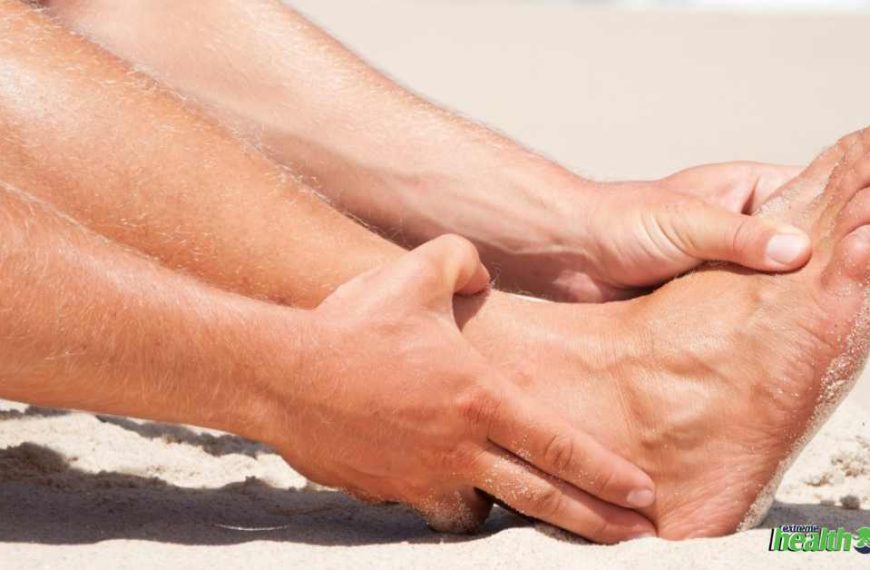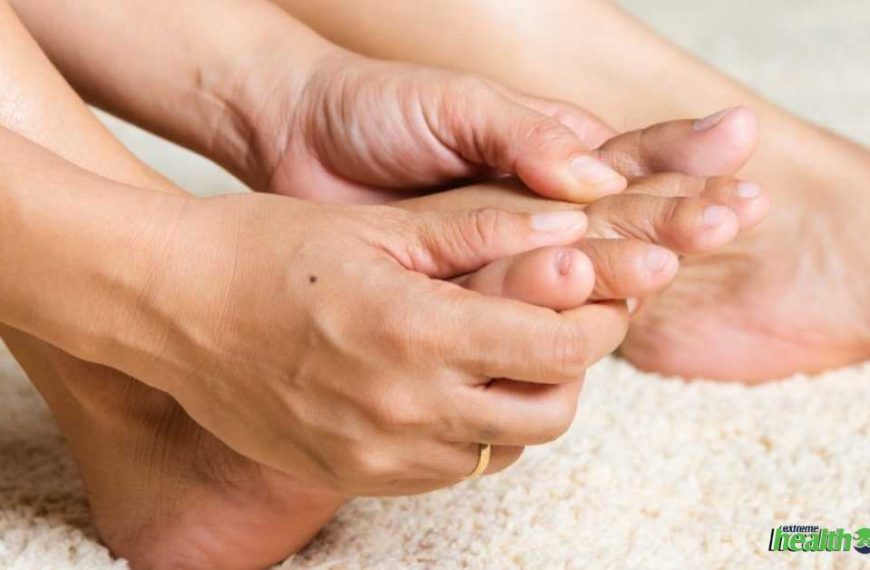Last Updated on December, 2024
Have you been suffering from pain or a swollen foot? Do you happen to have diabetes too? You might be suffering from diabetic foot problems.
Many people with diabetes suffer from diabetic feet. Many causes contribute to this as well. Diabetic feet can display a variety of symptoms; you might not even know you are suffering from it.
What are the symptoms, you ask? Let’s have a look….
Quick Summary
Diabetic foot symptoms include pain, loss of sensation, hair loss, dry skin, and fungal infections.
Poor blood flow, high blood sugar levels, and diabetic neuropathy are all contributing factors to diabetic foot complications.
Proper foot care, such as washing and drying the feet, trimming toenails, and wearing proper shoes and socks, is essential for preventing diabetic foot complications.
Quick Navigation
- What are the Diabetic Foot Symptoms?
- Why is the Foot Affected for People With Diabetes?
- Poor Blood Flow
- Blood Sugar Levels
- Neuropathy
- Smoking
- What is the Treatment Available for Diabetic Foot?
- How to Care For Diabetic Feet?
- Conclusion
- FAQs
- How Long Does it Take to Treat Diabetic Foot?
- Can You Fix Serious Cases of Diabetic Feet Without Amputation?
- What Kind of Foot Problems Can Cause Infections in Diabetic Patients?
- Was this article helpful?
What are the Diabetic Foot Symptoms?

These are the most common symptoms of diabetic feet, according to the CDC:
- Pain or cramps in regions like your leg, thigh, or calves during activities
- Loss of sensation, especially to feeling heat or cold
- Hair loss in the lower part of your legs, including your toes
- Pain, burning, or even tingling sensations in your feet
- A change in the shape or color of your feet over time
- Including the color of the toenail
- Dry skin that might be cracked with blisters or sores on your toenail and feet
- Fungal infections
Why is the Foot Affected for People With Diabetes?
This is mainly because of neuropathy. Nerve damage in the extremities, such as the arms and legs, is very common in diabetic patients. Together with poor blood flow caused by diabetes, the feet can be easily affected by nerve damage or infections. (1)
Poor Blood Flow
One of the most basic and common foot complications for people with diabetes is poor blood flow. This can also cause pain in the calves when walking long distances or up high terrains.
The hardening and narrowing of the blood vessels puts too much pressure on the feet. Also known as peripheral artery disease, the lesser the blood travels to your feet, the higher the chances of infections.
Since poor circulation can also contribute to slow healing, the best solution is to keep your blood sugar in check and exercise regularly to avoid serious foot problems.
Blood Sugar Levels
Having uncontrolled high blood sugar levels for a long time is extremely dangerous as the blood vessels are most affected.
Diabetes affect arteries making them harden, which usually causes reduced blood flow while increasing the pressure inside, which can ultimately lead to blood vessel damage.
Reducing blood flow is dangerous if you have a foot injury, as the infected tissue will take longer to heal.
Neuropathy
Diabetic people can suffer from diabetic neuropathy. It usually starts as peripheral neuropathy, where nerve damage is created in your feet by uncontrolled blood glucose levels.
In the initial stages, people with diabetes will feel severe pain due to the damaged nerves. It can also cause Charcot foot, leading to weakened bones or bone infections if untreated.
Diabetic neuropathy is one the most serious risk factors, as it will gradually make you lose the ability to feel pain, and cold or hot temperatures, making it harder to spot cuts or infections, especially around your heel, if you do not check your feet every day.
Additionally, this might lead to a foot ulcer if left untreated, which can lead to serious infections such as athlete’s foot.
Smoking
That’s right! Smoking and diabetes are a deadly combination that can aggravate and be the cause of foot problems.
Smoking contributes to the hardening of arteries, which decreases the blood flow to the legs and can worsen the already slow healing process that, can increase the likelihood of foot infections.
According to the American Diabetes Association, most people who require amputation are smokers. Therefore it is advisable to quit smoking to avoid irreversible damage to your legs.
What is the Treatment Available for Diabetic Foot?
Diabetic feet does not have a specific treatment. The best you can do is make sure you do not have any foot infections and take proper care of them. However, there are some preventive measures you take.
Firstly do a thorough foot exam every day to check for diabetic foot infections or foot ulcers.
Secondly, disease control is very important; therefore, ensure you keep your uncontrolled blood sugar in check.
Diabetic foot care is essential for healthy feet, therefore, do not wear tight socks, poorly fitting shoes, or walk barefoot. The best way to prevent foot complications is through your shoes and socks.
According to the American Orthopaedic Foot and Ankle society, investing in proper therapeutic shoes can help relieve the pressure on the foot.
How to Care For Diabetic Feet?
According to the American Diabetes Association, taking proper care of your feet should be done on a daily basis.
Firstly, you need to wash and dry your feet thoroughly, even between the toes. Use a pumice stone to scrub the dead cells away.
Make sure to trim your toenails straight across and check your feet daily for any cuts, sores, or blisters around your feet and legs.
Lastly, moisturize your feet well with a good cream and wear socks.
Additionally, have a health care provider have a look at your feet to prevent infection.

Conclusion
Diabetic feet can have serious complications if you do not look after your foot and watch out for its symptoms.
The main causes are high blood sugar, diabetic neuropathy, and peripheral vascular disease that results in the symptoms you experience.
If you are going through some symptoms, such as leg pain or cramps, foot ulcers, dry skin, loss of sensation, or any changes to your feet, consult a foot doctor immediately.
The sooner the symptoms are identified and treated, the easier it is to keep your feet from reaching the final stages of diabetic feet, which might even require amputation.
FAQs
Was this article helpful?
Was this article helpful?









